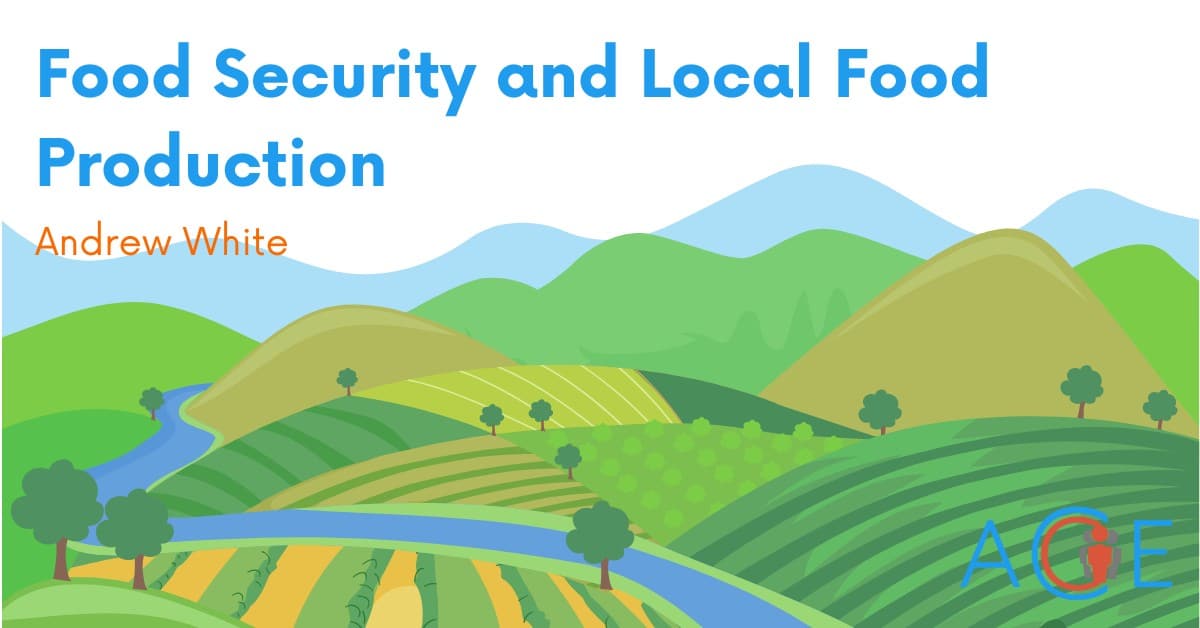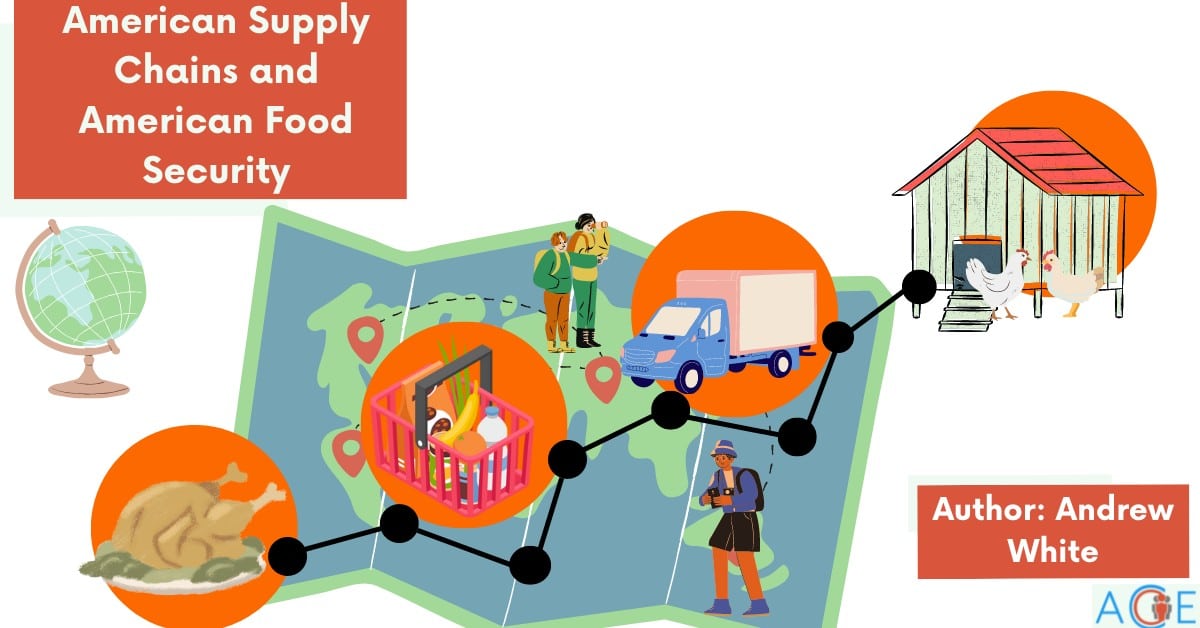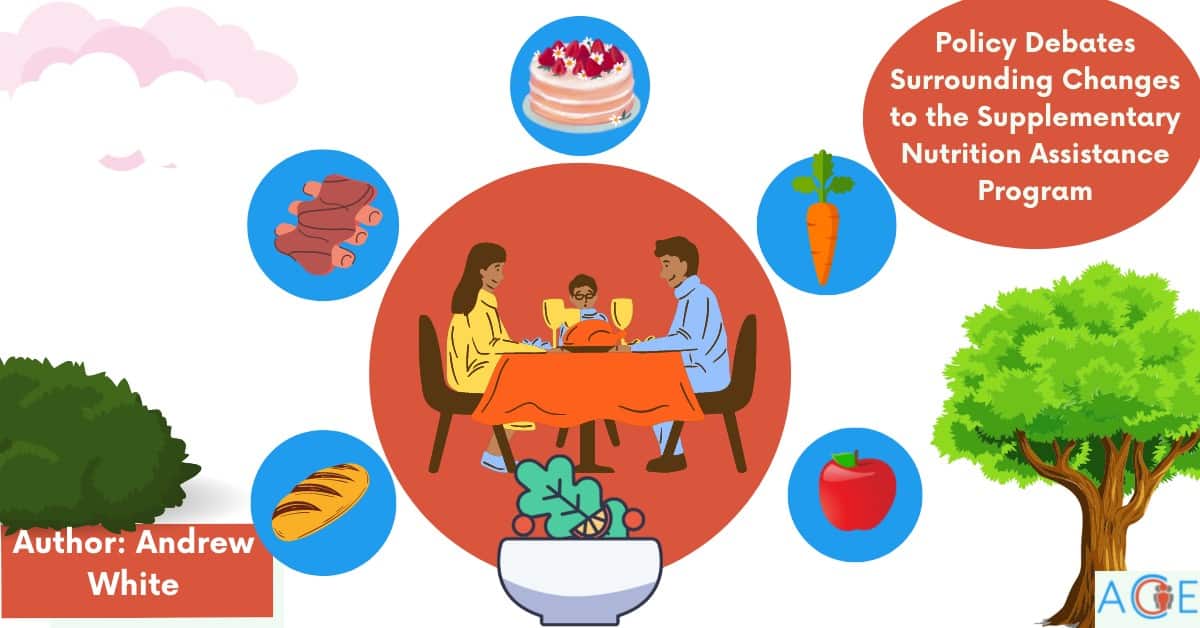Background
Generally, local food production refers to systems in which food is produced, distributed, and consumed within the same area. However, there is debate within the local food movement about this definition. For example, some call for local food systems to expand distribution—to sell food outside of the boundaries of the local community—while others fear that this kind of expansion would dilute local food’s impact. The looseness of the term local food production is perhaps indicative of its relatively new growth in the American food system.
Historically, local food (at least in the way that it is generally defined today) was not a major factor in American food production. Even today, it makes up a very small portion of total U.S. agriculture. The U.S. Department of Agriculture (USDA) found that in 2012, local food sales produced $6.1 billion, or about 1.5% of total U.S. agricultural production. This is an increase from 2008, where the USDA estimated that these sales accounted for $4.8 billion. However, the U.S. food system remains focused on globally integrated food production, where the places in which food is grown and processed and the places where it is eaten can be thousands of miles apart.
There are efforts to use local food production to address issues of food insecurity, which remains a significant issue in the U.S. The USDA reported that 10.5% of households in the United States were affected by food insecurity in 2020. The use of local food production as a means of addressing food insecurity has been contextualized differently in different national contexts. In Cuba, for example, it has been utilized as a means of bolstering the nation’s domestic food supply, particularly during times of crisis. In the context of the U.S., the focus of local food production appears to lie less on increasing the quantity of the food supply than it does on shifting the way in which the food supply is produced in order to improve food access and food system resiliency.
USDA Estimates of Local Food Sales 2008-2012, Congressional Research Service
Food Accessibility
Proponents of local food production argue that it can improve access to food. One of the main arguments is that local food production, by siting food within communities, can make healthy food more accessible to those communities. In neighborhoods where healthy food vendors are scarce, residents may need to travel outside of their neighborhood to reach healthy food; local food production is intended to bring healthy food closer to people.
Another main argument made by supporters of local food production is that it can encourage the formation of political practices, within communities, that enable people to have greater agency in their food system, and make decisions about food distribution more equitably. Access-based local food production efforts can be seen through governmental policies in the form of USDA funds that are designed to support farmers markets and urban gardens. On the nongovernmental side, there are efforts to create local food systems that link consumers, producers, processors, and distributors with institutions to support the community through local food production and food-based businesses.
There are also efforts to form local food retail sites such as farmers markets. The evidence surrounding each of these elements of accessibility is conflicting. There is some evidence that local food production can have some impact on the diets of communities. For instance, there is research suggesting that proximity to farmers markets improves diet and exercise. Additionally, there is research showing that, in general, convenient access to healthy food causes incidences of overweight and obesity to decrease, and diets to improve. As farmers markets are designed to bring food (especially produce) from local farmers directly to consumers in a community, it has been argued that farmers markets can fulfill this role of providing convenient food access. However, it has also been argued that there is not sufficient evidence to demonstrate that increasing access to local food improves either diets or food security.
A study of 24 farmers markets in Los Angeles found that the amount of fresh produce offered in farmers markets differs based on the racial and economic composition of the communities in which they operate, which raises issues about equity. In addition, local food is often as, or more expensive than, non-local food, which casts doubt on its potential to improve access through affordability.
At the same time, there is evidence showing that expanding local food production increases employment, among a number of other positive economic outcomes. For example, a study from Iowa State University found that re-localizing the production of staple food items (such as chicken or eggs) would add 50-75 jobs in Southeast Iowa.
Evidence of local food systems fostering more equitable food distribution and increased community agency is similarly conflicting. Research suggests that while local food production can increase equity and agency, it does not always do so, and some have argued that localized food systems may actually produce issues of inclusion. However, others argue that this criticism of local food systems makes generalizations that are too broad, and call for more research on different local food initiatives.
Food Resiliency
Advocates for expanding local food production allege that it can improve food security by strengthening the resiliency of the American food system. One of the main arguments is that expansion of local food production makes production sites more geographically dispersed, and introduces diversity in production and distribution, making the system less vulnerable to shocks. It is also argued that it shortens supply chains, thereby saving on energy costs and protecting the environment.
The USDA has invested some money into the resiliency aspect of local food production, including loans specifically intended to encourage private investment into local food processing. Additionally, in an endeavor that combines both the private and governmental sectors, there is a partnership between the Southeast regional supermarket chain Lowes Foods and the Center for Environmental Farming Systems that used U.S. government funding to engage in a partnership to increase the amount of local food available at Lowes Foods.
There is some debate about whether local food systems improve food system resiliency. While local food systems shorten supply chains, because they are generally meant to keep the distribution of food within a certain area, the claim that they reduce energy costs has been challenged. For example, some research suggests that the local deliveries made by trucks performing regional food distribution are relatively less efficient than the large-scale transportation used in the mainstream food system. Some have also argued that local food production may not be the most efficient use of agricultural resources, arguing that non-local producers make better use of them.
Additionally, an article from the American Enterprise Institute argues that, though local food production has its uses, a food system that makes use of international food trade is less vulnerable to disruption than a purely local one, because the shocks to global food systems that are the most important are weather-based issues affecting yields, and usually impact individual countries more severely than they do the world system as a whole.
There is evidence supporting the use of local food production as a means of strengthening food security, and actions are being taken within the federal government, as well as outside of it, to expand it. However, an existing body of contradictory research suggests a potential need for further research on this topic, if local food production’s potential to impact food security is to be fully understood.




